open main page for all woods open page 2 for articles
CURLY
Contortions in grain direction sometimes reflect light differently as one moves down the grain and this creates an appearance of undulating waves known as curly figure. It is frequently described as looking like a wheat field in a mild wind, and can be so strong an effect that your eyes will swear that a flat piece of wood has a wavy surface. Many species develop this figure, maple being a very common example. Stump and butt sections of trees often produce a diagonal, staircase-like curl referred to as "angel steps", and a rolling curl figure that is called "cross-fire". An extreme form of curly figure is called "fiddleback". The amount of curl in a wood sold as "curly" can range from almost none to truly spectacular, so this is not a term to be trusted via mail order purchasing.
It is sometimes incorrectly believed that curly figure is always a result of wavy grain. In fact, wavy grain is quite rare (much more rare than curly figure) and does not even always result in curly figure (although it usually does). To illustrate this conclusively, I show at the bottom of this page a quartersawn maple surface with very clear curly figure and no hint of wavy grain.
Examples arranged alphabetically by common name
(note that stronger curls exist but these are the best I have
and I have included plenty of weak curls as examples)
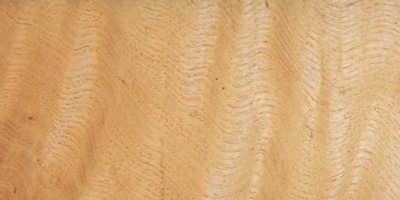


- olive ash --- has wavy grain in addition to curly figure
- white ash
- basswood
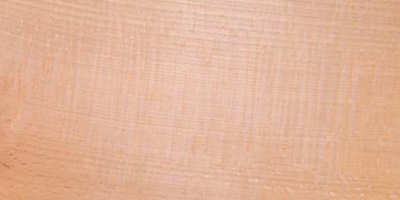
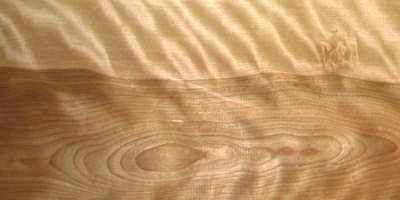
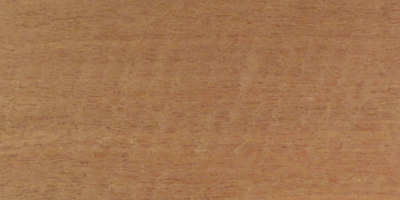
- beech
- red birch
- bishop wood
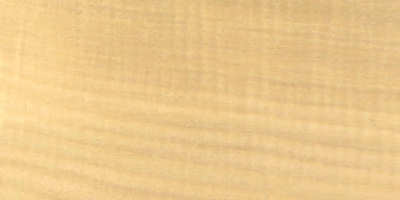
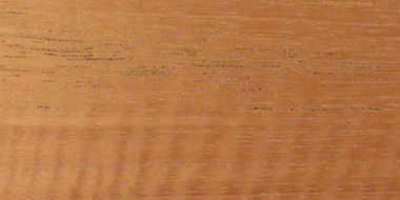
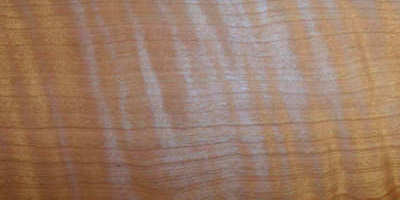
- buckeye
- spanish cedar
- American black cherry

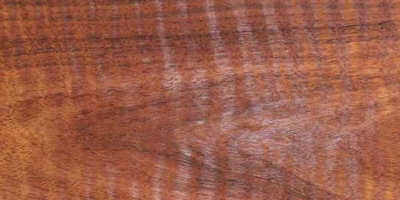
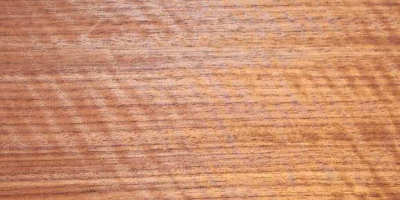
- gaboon ebony
- etimoe (flat cut)
- etimoe (quartersawn)

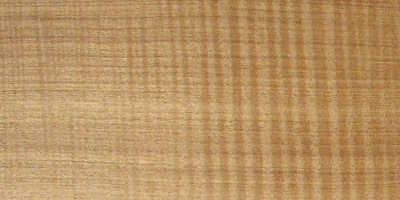
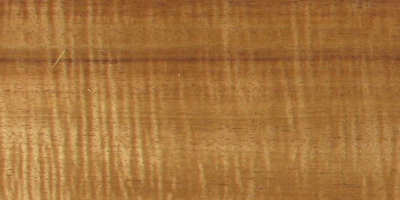
- harewood (a type of maple)
- hickory
- koa
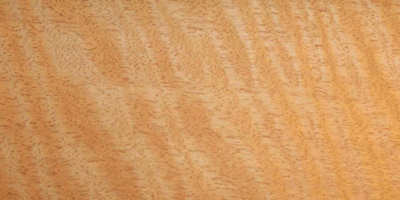
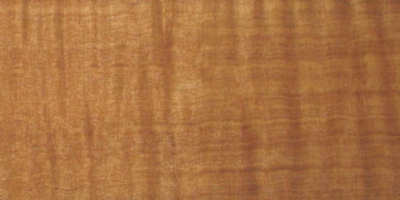
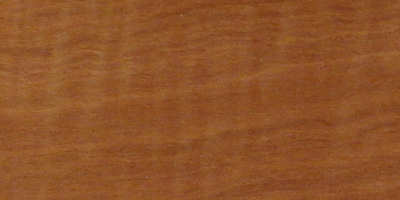
- African mahogany
- Honduran mahogany
- makore
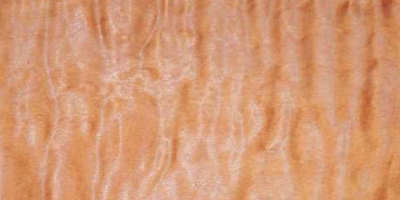
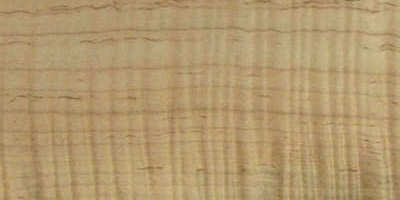

- bigleaf maple --- this could be called quilted instead of curly
- red maple
- movingui
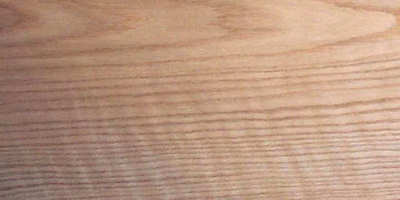
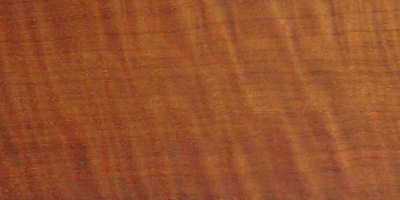
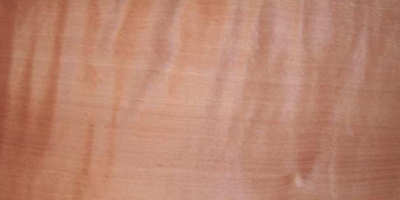
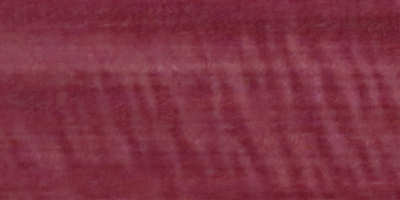
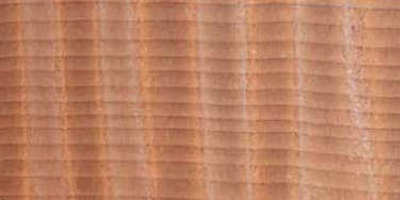
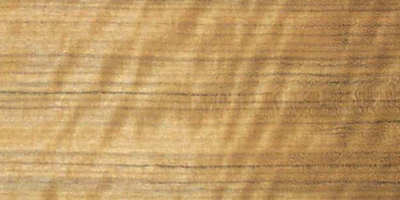
- purpleheart
- redwood
- shedua
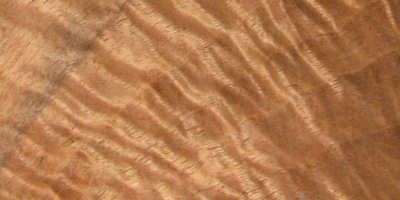
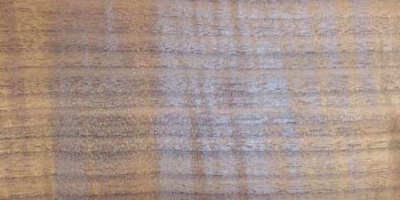
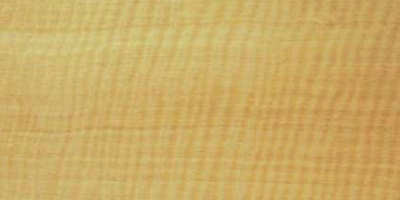
- black walnut crotch
- black walnut
- yellowheart
curly figure without wavy grain
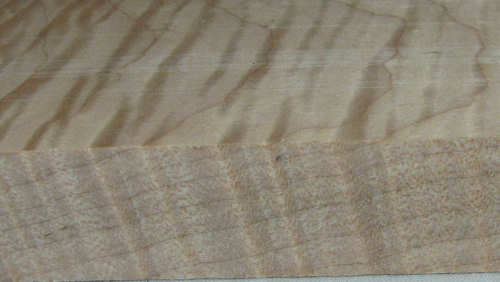
The face grain (upper part) and side grain (lower part) of a nice piece of very curly maple. If you look carefully at the side grain, you will see that it, like the face grain, shows strong curly figure but the grain lines have no wave at all. The face grain shows "cathedral grain" figure typical of a flat cut surface and the side grain, which is a quartersawn surface, shows straight grain lines (at an angle, admittedly, but essentially straight going from lower left to upper right)






























